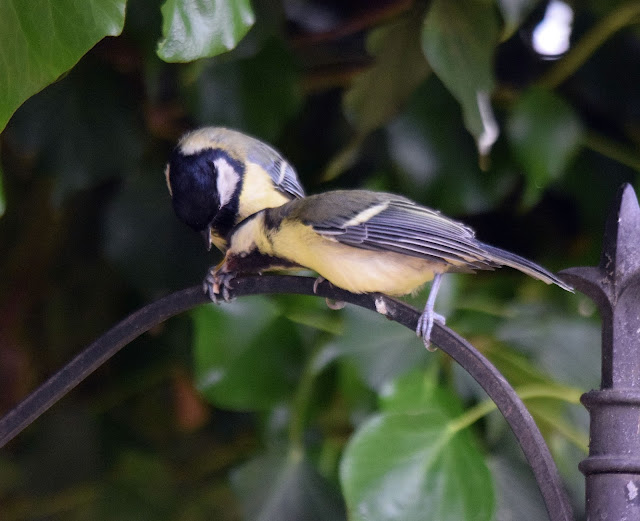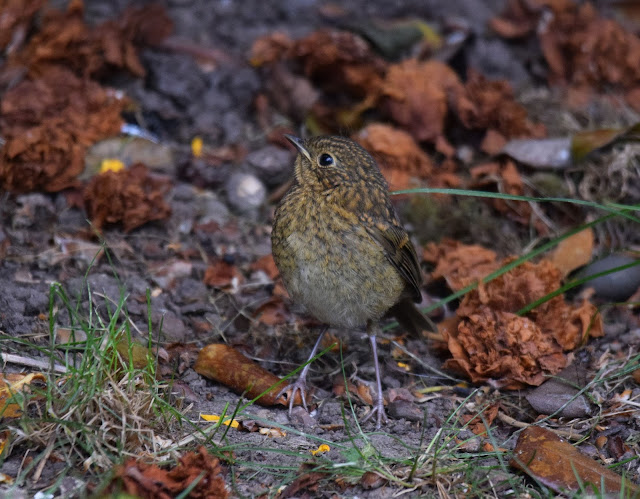Its that time of year again when the garden takes on the guise of a kindergarten. Juvenile birds are being brought to the feeders, although they seem more interested in begging for food, but I suspect they will get the idea soon enough and learn where to find an easy source of food.
Blackbirds nesting close by in the Ivy were first to show off their offspring, only two made it to juvenile status, they are still being seen around the garden, and still taking food from the adults despite their size.
 |
| Male Blackbird and Juvenile |
House Sparrows visit the feeders now with a trailing posse of juveniles, they seemed to have done very well once again with lots of House Sparrows being seen around the garden.
 |
| House Sparrow |
As I mentioned on previous blog pages, our garden Robins managed to raise five juveniles, they are still being seen around the garden, although I suspect that when those red breast feathers come through they will be chased away.
 |
| Robin |
 |
| Juvenile Starling |
 |
| Great Tit |
As you can see " kindergarten" seems very apt at the moment.

























